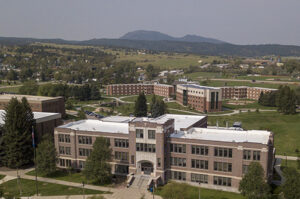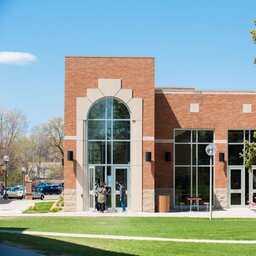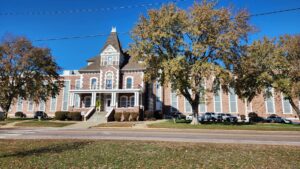Savvy business owners and managers are always looking for efficiencies in order to enhance profitability. Not so in government. The motivations are different there.
Government officials tend to resist change. Once a government benefit, building or department is created, people and jobs become dependent on maintaining the status quo. And those people wield political clout.
This built in resistance to change explains why South Dakota subsidizes an excessive number of school districts, counties, governments and public universities, and seems to lack the political will to do anything about it. A good example of this is the recent response of the South Dakota Board of Regents to our expensive and chronic oversupply of state funded higher education institutions.
Discounts to Fill Empty Seats
The Board of Regents is responsible for running the state’s six public universities. They met in mid-December and decided to expand the availability of already generous price discounts in an effort to sustain enrollment. They expanded the in-state tuition program to a few more states and announced a new program for state employees.

The in-state discount was probably originally intended as a logical benefit for South Dakota residents. But it has evolved into a widespread discount for students from a dozen states. College bound students from Iowa, Nebraska, North Dakota, Minnesota, Wyoming, Montana, Colorado, Illinois, Wisconsin, Kansas, Missouri and South Dakota now get it.
South Dakota has positioned itself as the low-cost provider of higher education in the region. In fact, Forbes reportedly recently ranked it as the most affordable state to get a college degree. But that strategy presumably comes at a cost in a state with limited resources.

Black Hills State in Spearfish
The Regents also decided to create another new discount program, giving state employees half price tuition. Some hope this may help worker retention. But it seems like another distraction from the real problem.
Excess Capacity and Decreasing Demand
Unfortunately, discounts fail to confront the core issue which is excessive capacity combined with decreasing demand.
At some point in the past, we overbuilt our higher education system and now have more capacity than we need. Sadly, the problem is only going to get worse.
An historic drop in higher education demand is reportedly on the way. The CEO of the Board of Regents was recently quoted as saying the higher education landscape is changing drastically with big demographic challenges coming up in the next decade.
Most Non-Resident Graduates Leave the State

Northern State University in Aberdeen
Supporters of the expanded in-state discount program hope it helps with workforce development. Of course, we need more workers in the state. But the unsettling reality is that 72% of university students from outside South Dakota leave the state after we provide them with an inexpensive education. Meanwhile, many of my business friends report that what they really need is more graduates from the state’s technical schools.
Financial Discipline Welcome
The legislature recognizes there are problems in our higher education system. In 2020, they imposed a bit of financial discipline in higher education with SB 55. It required more regular efforts to identify and eliminate programs with low enrollment, low graduation rates and a lack of financial viability. Good move! But it did little to address the underlying problem.
Reducing Supply Would be Logical
A better strategic move, in the face of an overbuilt higher education system and declining market demand, might be to close a university or two. While that sounds drastic, it warrants serious consideration with changing market dynamics.
In 1970, Richard Gibb, the commissioner of higher education, conducted a study of South Dakota’s system. His report recommended reducing the number of state institutions from seven to four. But that didn’t happen.
Many public officials I have talked to privately over the years acknowledge that we have too many universities in the state. None know what to do about it. Collectively, we lack the political will to do what we know we should. Meanwhile, there is a precedent that few seem interested in following.

Governor Janklow
In the 1980s, Governor Janklow recognized that the state had too many universities. He turned the one in Springfield into a women’s prison.
Come to think of it, maybe we could reduce our excess supply of universities by turning one into a new state men’s prison. South Dakota needs one, and Lincoln County would likely welcome that idea. This could be a “two birds with one stone” solution.

South Dakota Mens’ Penitentiary in Sioux Falls
Okay, perhaps not. But if this were business, we would indeed be exploring creative solutions to our oversupply problem. And if this problem were handled in a businesslike way, perhaps we would have more money available to support our technical schools and pay our K-12 teachers.
Thank you, Joe for bringing up this important issue. The dwindling student enrollment numbers in South Dakota’s higher education institutions is indeed a concern. Here are a few potential solutions beyond your advice to just give up and remove the problem through extinction:
Improve Quality of Education: Enhancing the quality of education and ensuring that the curriculum is aligned with the needs of the job market can make these institutions more attractive to prospective students.
Promote Online Learning: With the advent of technology, online learning has become more prevalent. Offering more online courses and degrees can attract students who may not be able to relocate or commute.
Financial Incentives: Providing scholarships and financial aid can help attract students who might otherwise be deterred by the cost of higher education.
Partnerships with Businesses: Establishing partnerships with local businesses can provide students with internship and job opportunities, making the universities more appealing.
Marketing and Outreach: Effective marketing strategies and outreach to high schools within and outside the state can help increase awareness about the institutions and their offerings.
While these are potential solutions, it’s important to conduct thorough research and analysis to understand the root causes of the issue and devise strategies that are most effective for the specific circumstances of South Dakota. It’s also crucial to ensure that any changes made are in the best interest of the students and contribute to their academic success and future career prospects.
– AI Generated/Prompt Engineered by Porter Lansing
The state probably does have an extra public university or two, but there are far worse problems than having too much educational opportunity, research potential, and cultural and sporting activities available for South Dakotans and visitors. Nothing is more important to the economic development, quality of life and overall well-being of the state than having a good system of higher education — technical schools as well as universities.
Of greater concern might be the large number of small high schools around the state that, in some cases, might slightly limit educational offerings available to students. However, that’s an issue that can only be resolved effectively at the school distrcit level.
Maybe bean counters searching for government to cut should look for ways to reduce the excessive number of counties in South Dakota instead.
Hear, hear Rob 👏🏻👏🏻👏🏻
Bringing in students is more sales tax revenue from students while they’re here and for visiting families. South Dakota has become known for specific degree programs such as journalism, agriculture, accounting, medical, and mining. There would be a void. Also, the state is becoming known for university athletics.
Other states are losing to here because of tuition differential. With this economy and lack of federal loans, there’s potential student population growth. Yes, they leave but also come back to retire where there’s less crime and no state income tax. Retirees bring in wealth and clean environment.
Low tuition here has become transferable. South Dakota residents pay rates here for Minnesota such that in state there mobbed here 6 months for residency so they can afford U of M there. It’s a double reverse but temporary residents pay sales tax and fill menial seasonal jobs.
Perhaps the present universities can be justified.